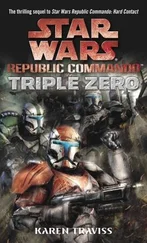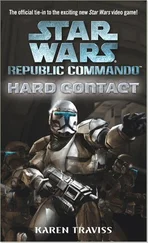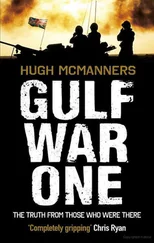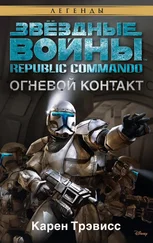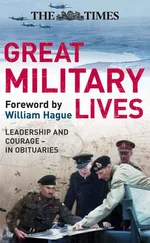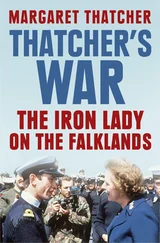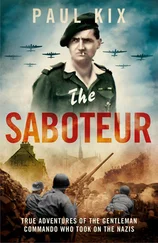Hugh McManners - Falklands Commando
Здесь есть возможность читать онлайн «Hugh McManners - Falklands Commando» весь текст электронной книги совершенно бесплатно (целиком полную версию без сокращений). В некоторых случаях можно слушать аудио, скачать через торрент в формате fb2 и присутствует краткое содержание. Город: London, Год выпуска: 2014, ISBN: 2014, Издательство: Nightstrike Publishing, Жанр: nonf_military, Биографии и Мемуары, на английском языке. Описание произведения, (предисловие) а так же отзывы посетителей доступны на портале библиотеки ЛибКат.
- Название:Falklands Commando
- Автор:
- Издательство:Nightstrike Publishing
- Жанр:
- Год:2014
- Город:London
- ISBN:978-0-992-81540-0
- Рейтинг книги:4 / 5. Голосов: 1
-
Избранное:Добавить в избранное
- Отзывы:
-
Ваша оценка:
- 80
- 1
- 2
- 3
- 4
- 5
Falklands Commando: краткое содержание, описание и аннотация
Предлагаем к чтению аннотацию, описание, краткое содержание или предисловие (зависит от того, что написал сам автор книги «Falklands Commando»). Если вы не нашли необходимую информацию о книге — напишите в комментариях, мы постараемся отыскать её.
Falklands Commando — читать онлайн бесплатно полную книгу (весь текст) целиком
Ниже представлен текст книги, разбитый по страницам. Система сохранения места последней прочитанной страницы, позволяет с удобством читать онлайн бесплатно книгу «Falklands Commando», без необходимости каждый раз заново искать на чём Вы остановились. Поставьте закладку, и сможете в любой момент перейти на страницу, на которой закончили чтение.
Интервал:
Закладка:
“This is Zero wait, out to you, 41 Bravo this is Zero over.”
“41 Bravo over” – the breathless voice.
“This is Zero, give Zulu 41 Echo a call. Out.”
“41 Bravo roger out to you, Zulu 41 Echo this is 41 Bravo over.”
“Zulu 41 Echo, can you please confirm that all your own call-signs are OK?”
“41 Bravo yes over.”
“Zulu 41 Echo roger, Golf Lima, out.”
The latter was one of several little messages that were now being slipped into radio transmissions. ‘Golf Lima’ was (obviously) ‘Good Luck.’
By this time we could see lines of red tracer screaming out in long angry curves, some concentrated on particular places, some curving into the mountain and ricocheting upwards like sparks. The artillery of both sides were firing and the sound of shells whistling from right to left (ours going over) or left to right (theirs) was punctuated by the phut of a star-shell bursting then its wavering light, swaying under the parachute and making the shadows of the moonscape underneath elongate and deepen as the flare fell slowly to earth.
The enemy’s medium artillery were putting up star-shell too, but thankfully they were unable to adjust it properly. Either the phosphorus burnt out on the ground or ignited too high to provide usable light for very long. The same was true of their mechanical time air-burst shells which particularly thankfully went off too high. This made them were alarming but not lethal – their bang a shock, but the fall of shrapnel too spread out and dissipated to cause serious injuries to people on the ground.
Understanding the science of artillery is very reassuring on a battlefield. If airburst shells explode directly overhead, the shrapnel will fall well to the rear because of the shell’s trajectory and shell case design. You only take cover and pray when airburst flashes off in front of you.
Nick and I were spectators, listening to our PRC 320 HF radio, and trying to work out what was going on from the flashes and lights. Hitherto silent radio nets became suddenly alive with the clipped jargon of fire procedures, until it became too busy to make any sort of sense of it.
We were tired, and so despite men dying and history being made in the darkness around our position, we got our heads down to sleep. The naval shells continued to whisper overhead, the dull, heartless crumps of their detonation echoing across the dark hills below us.
The next day, D Squadron, led by the ever resilient and resourceful Major Cedric Delves, the man who’d led the Pebble Island raid, decided to take out the enemy on the two features near to us. From being a threat we didn’t care to think about, the enemy we’d hidden from, were now a distraction the SAS could do without.
So just after first light, D Squadron advanced in a most unusual SAS operation – a conventional infantry company advance-to-contact. They had one troop forward, two troops back in an arrowhead formation, and made a steady advance-to-contact toward Hill 500 and the enemy OP position to the north. On arrival, they found the enemy had fled and the position unoccupied, littered with empty tins and recent rubbish. They came back, had a cup of tea, then did the same thing eastwards to clear the rest of our ridge, finishing up with making attacks on Twelve O’Clock Mount and Mount Low.
The enemy on Twelve O’Clock Mount saw them coming and also fled, ditching weapons, rations and equipment. There was a degree of disappointment at this, as D Squadron hadn’t even been able to lose off any mortar rounds as the range was too long. As we’d done at the end of the Fanning Head operation, the mortar team had to hump their heavy ammunition cases all the way back.
But FO1 was now totally out of food. I’d mentioned this to Cedric. The Squadron Sergeant Major now arrived behind our OP with a couple of sandbags full of Argie rations captured from Twelve O’Clock Mount. They contained lots of meat: stewed steak made in Argentina courtesy of Fray Bentos, and English roast beef.
The shelling from both sides continued all day, interspersed with bursts of machine-gun and small-arms fire. We knew from the radio net that our units had taken their objectives in the attacks and were now consolidating. This meant sending the prisoners rearwards to get them out of the way, then digging trenches, cleaning weapons, recharging magazines and replenishing ammunition. The sergeants-major would be listing to the names of casualties, taking ammunition orders and determining kit losses; and the unit commanders would be walking round their wind-swept positions talking to their men and planning the next stage of the operation. The boys would be tucked away into the rocks, brewing tea and munching biscuits AB, with sentries manning the GPMGs and anyone without a specific task taking what rest he could in the cold and the constant noise of the rather desultory firing and shelling that persisted.
We didn’t know how many people had been killed. Dealing with the bodies isn’t practised on most military training exercises. But this wasn’t something we were thinking about…
We could see artillery shells exploding against the hillsides. It wasn’t really possible to work out what they were shooting at. The Argie enemy gun positions in front of us were in action, their cam nets now partly drawn back, producing a cloud of white smoke every time they fired, which allowed us to see each gun barrel very clearly. There were larger-sized clouds over the Argie medium artillery positions, which, because of their great destructive force, were very much a priority target for us.
I was delighted when our Commanding Officer Lt Colonel Mike Holroyd Smith came onto our Naval Gunfire Control Net to give me priority use of all our artillery to sort them out, as they were causing casualties on the Argie positions we’d captured overnight. Nick established communications with the commando regimental fire-control centre, which allocated a commando gun battery to us so we could adjust fire onto these gun positions. We settled down to capitalise on our ideal observation position.
It’s not possible to destroy well dug-in military installations using artillery unless you are lucky enough to hit a key position, which for a gun battery would be its command-post tent. The shrapnel would kill the operators and shred the radios.
What are known as ‘destruction shoots’ can be attempted using medium or heavy artillery, but large amounts of ammunition have to be used. Our naval shells were large enough to be able to do this, and the small spread of the rounds (all being fired rapidly from the same gun) made it possible to concentrate on single objects like a bridge or building. But because of the threat of the Argentine Air Force, the ships could only come in at night.
The destruction of a gun position would be very difficult because the guns themselves are very robust, and each battery’s various components are spread out over a 200 plus metre-square area. Nevertheless, the battery’s operational efficiency can be drastically reduced by killing the men that serve the guns. Once the gun layer and the Number One (the soldier who sets the gun to fire in the right direction and at the correct elevation, and the NCO in charge) have been incapacitated, that gun will either not fire or is likely to be inaccurate. Each gun is surrounded by huge piles of ammunition, which can be set alight and be made to explode, making life very dangerous for the crews, and depleting their stocks.
In the Royal Artillery the firm rule is that if a gun battery is ‘in action’, i.e. firing in support of the infantry, it continues so to do regardless of whether it’s under attack or being shelled. If the attack is likely to succeed, the GPO (Gun Position Officer) may decide to dedicate half his gun crews to fighting off the enemy, but the priority is to continue providing fire support, come what may.
Читать дальшеИнтервал:
Закладка:
Похожие книги на «Falklands Commando»
Представляем Вашему вниманию похожие книги на «Falklands Commando» списком для выбора. Мы отобрали схожую по названию и смыслу литературу в надежде предоставить читателям больше вариантов отыскать новые, интересные, ещё непрочитанные произведения.
Обсуждение, отзывы о книге «Falklands Commando» и просто собственные мнения читателей. Оставьте ваши комментарии, напишите, что Вы думаете о произведении, его смысле или главных героях. Укажите что конкретно понравилось, а что нет, и почему Вы так считаете.

